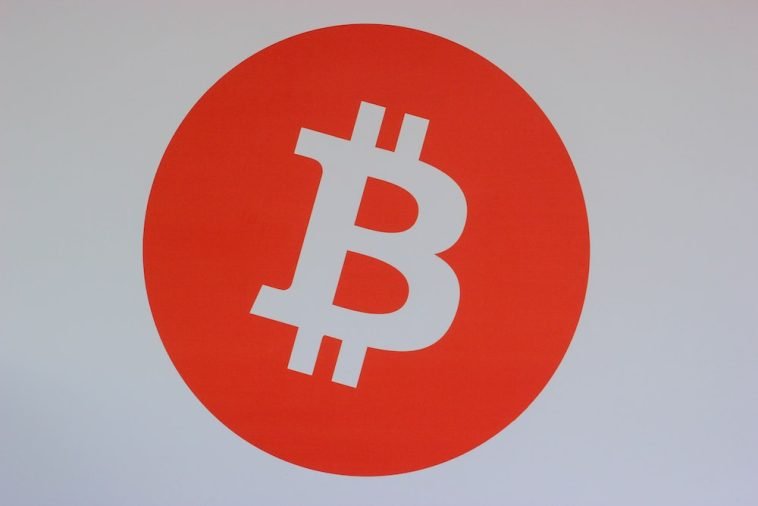Introduction.
Cryptocurrency trading has become increasingly popular across the globe, and Nigeria is no exception.
In fact, according to a 2023 report from Chainalysis, Nigeria ranks as one of the top countries in Africa for cryptocurrency adoption.
This surge in interest has opened up new ways for Nigerians to access crypto markets, with Peer-to-Peer (P2P) trading being one of the most convenient and accessible options.
But why is P2P trading such a big deal? The answer is simple: it allows you to buy and sell cryptocurrencies directly with other users, without the need for a central exchange or bank to mediate the transaction.
This is particularly useful in Nigeria, where access to traditional banking services may be limited for some people, and where there are often delays and high fees when using international payment methods.
Binance, one of the world’s largest cryptocurrency exchanges, offers a P2P platform that connects buyers and sellers in Nigeria.
It allows users to trade popular cryptocurrencies like Bitcoin (BTC), Ethereum (ETH), and stablecoins like USDT directly with each other.
This provides an efficient, cost-effective, and secure way for Nigerians to get involved in the crypto world.
If you’re new to P2P trading on Binance, don’t worry! In this article, I’ll walk you through everything you need to know about using Binance’s P2P platform in Nigeria – from setting up your account and understanding the buying and selling process to keeping your transactions secure. So, let’s dive right in!
Why Choose P2P Trading on Binance?
Before I jump into the step-by-step guide, let’s take a moment to understand why Binance P2P is such a good choice for Nigerians looking to buy and sell cryptocurrencies.
- No Bank Involvement: One of the major benefits of P2P trading is that it eliminates the need for banks or other intermediaries. This is particularly important in Nigeria, where many banks restrict transactions related to cryptocurrencies. With Binance P2P, you can buy and sell crypto directly with other users, bypassing the traditional financial system.
- Multiple Payment Options: Binance P2P offers a variety of local payment methods in Nigeria, such as bank transfers, mobile money, and even cash payments. This gives you the flexibility to choose the method that’s most convenient for you.
- Low Fees: Binance doesn’t charge any fees for buying or selling crypto through its P2P platform, making it an affordable option for Nigerians who want to trade.
- Security and Trust: Binance offers an escrow service, which ensures that your funds are safe during the transaction. Once a buyer and seller agree on a trade, the crypto is held in escrow until both parties confirm that the payment has been made. This greatly reduces the risk of fraud.
How Do I Use P2P on Binance in Nigeria?
Now that you understand why P2P trading on Binance is a great option, let’s go through the process of using it in Nigeria. I’ll break it down into simple, easy-to-follow steps.
Step 1: Create a Binance Account
The first thing you need to do is create an account on Binance, if you haven’t already. Here’s how:
- Go to the Binance website or download the Binance app on your mobile device.
- Click on the “Register” button.
- Enter your email address and create a secure password.
- Verify your email address by clicking on the link Binance sends to your inbox.
- Complete the identity verification (KYC) process to enhance your security and enable higher transaction limits.
Once your account is set up and verified, you’re ready to start trading!
Step 2: Deposit Funds into Your Binance Wallet
To start using P2P on Binance, you need to have funds in your Binance wallet. You can deposit funds via P2P or other methods like bank transfers or credit cards. Here’s how to deposit funds using the P2P method:
- Log in to your Binance account.
- Go to the “Wallet” section and select “P2P Trading.”
- Click on “Buy Crypto” and select the “P2P” tab.
- Choose your preferred payment method (e.g., bank transfer, mobile money).
- Enter the amount you want to deposit and click “Buy.”
Your deposit will be credited to your wallet in a matter of minutes.
Step 3: Buying Crypto on Binance P2P
Once you have funds in your wallet, you can start buying cryptocurrency. Here’s how to do it:
- Go to the “P2P Trading” section in the Binance app or website.
- Select “Buy” and choose the cryptocurrency you want to purchase (e.g., Bitcoin, USDT, etc.).
- Set your preferred payment method and the amount you want to buy.
- Browse through the list of available sellers. Binance will show you a range of offers, including the price and the payment method.
- Choose a seller with a good reputation and a payment method that works for you.
- Click “Buy” to proceed.
- Review the order details, confirm the amount, and click “Place Order.”
Once you place the order, you’ll be directed to a chat with the seller. The seller will send their payment details, and once you’ve made the payment, you’ll mark it as paid.
Step 4: Confirming Payment and Completing the Transaction
After you’ve made the payment to the seller, here’s what happens:
- The seller will confirm the payment.
- Once the seller verifies your payment, Binance will release the crypto from escrow to your wallet.
- Both parties will rate each other, and the transaction is complete.
Step 5: Selling Crypto on Binance P2P
Selling crypto on Binance P2P is just as easy. Here’s how you can sell your crypto to other users:
- Go to the “P2P Trading” section and select “Sell.”
- Choose the cryptocurrency you want to sell and the amount.
- Select your preferred payment method.
- Browse through the list of buyers, and choose someone who fits your criteria.
- Click “Sell” and follow the instructions to complete the transaction.
After the buyer makes payment, confirm the payment and release the crypto to them. As with buying, you’ll leave a rating for the buyer, and the transaction is complete.
Tips for Safe and Successful P2P Trading
To ensure that your P2P trading experience on Binance is smooth and secure, here are some useful tips:
- Choose Trusted Sellers and Buyers: Binance allows users to rate each other, so always check a user’s reputation before making a trade. Look for users with a high rating and positive feedback.
- Use Escrow: Binance’s escrow service ensures that the crypto is locked until both parties confirm the transaction. Always use this feature to avoid fraud.
- Communicate Clearly: Always confirm payment details before making any payments, and keep communication within the Binance platform to avoid scams.
- Follow Binance’s Rules: Ensure you understand Binance’s P2P policies and terms of use to avoid penalties or account restrictions.
FAQs
1. Can I use Binance P2P without a bank account?
Yes, Binance P2P supports a variety of local payment methods, including mobile money, which allows you to trade without a bank account.
2. Are there any fees when using Binance P2P in Nigeria?
No, Binance does not charge any fees for buying or selling crypto through its P2P platform.
3. How can I protect myself from fraud when using Binance P2P?
Always use Binance’s escrow service, check the reputation of your trading partner, and avoid sharing personal payment details outside the platform.
4. Can I trade any cryptocurrency on Binance P2P?
Binance P2P supports popular cryptocurrencies like Bitcoin (BTC), Ethereum (ETH), Tether (USDT), and others. However, availability may vary based on the current market.
5. Is Binance P2P legal in Nigeria?
Yes, Binance P2P operates legally in Nigeria. However, be sure to comply with any local regulations related to cryptocurrency.
Conclusion
Using Binance P2P in Nigeria is a great way to buy and sell cryptocurrencies with minimal hassle and fees. By following the steps I’ve outlined, you can easily access the crypto market and start trading.
The key to success is ensuring that you trade with trusted parties, use escrow for security, and always stay within the Binance platform for communication.
Now that you have all the knowledge to get started, what are you waiting for? Ready to jump into the world of P2P crypto trading on Binance?





GIPHY App Key not set. Please check settings